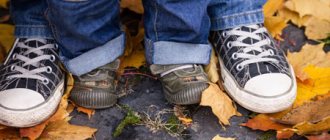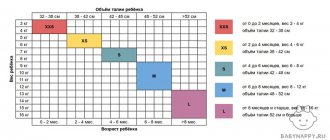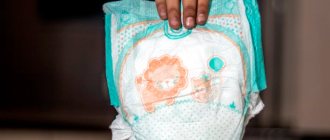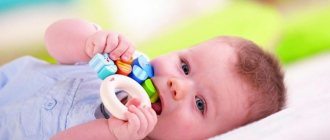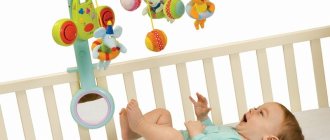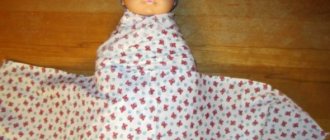At what age should you buy skis?
The age at which a child can start skiing is, of course, not strictly defined. It depends on the desire of the child himself and the patience and perseverance of the parents. A child who has barely learned to balance on his feet is unlikely to enjoy riding.
Set for a small skier
Some parents teach children to participate in active sports as early as 2 years and 5 months. At this age, you can already take your baby on his first ski trips, but be prepared that you will often have to take his skis off, ride him, entertain him with games, etc.
A 3-year-old child already has much more developed concentration, perseverance and focus on results. Children 4–5 years old can easily spend about half an hour on the ski track and enjoy skiing down small slides.
Mountain or cross-country
It is recommended to start skiing with cross-country skiing. They make it easier and safer to learn to maintain balance and master sliding skills. However, parents who actively ski from the mountains often put their children straight into downhill skiing. On the ski slopes today you can often see nimble skiers gliding quickly down the slope, while they are barely knee-high in height to an adult. Constantly striving to learn and master a new space, a child often shows perseverance that is enviable for an adult. Therefore, when choosing the type of skis, you need to be guided not only by your own preferences and safety issues, but also by the child’s inclinations.
If the terrain allows you to choose between two types of skiing, perhaps you should not rush into purchasing skis at first, but invite your child to try both types of loads by renting equipment.
Types of skis
Wooden and plastic
Skis for both children and adults are made of two types of material - wood or plastic. Wooden skis are affordable and environmentally friendly, durable and reliable, flexible and safe. They are stable and glide quite well, especially in frosty weather. But on thaw days, wooden skis glide much worse and therefore need to be lubricated. In addition, wooden skis can absorb moisture and become somewhat heavier than their normal weight.
Previously, all skis were wooden. In the photo: teaching young skiers the basics of the sport.
Plastic skis always glide well, even too well for beginners. Therefore, plastic skis for children and beginners must have special anti-slip notches. This is to prevent them from slipping and accelerating too quickly for a beginner. They also prevent rollback.
Cross-country
Designed to travel long distances at high speed. They are made of wood or plastic, but remember that wooden models require more careful care than plastic ones.
Divided into two types:
- For skating , short skis with an edge for greater stability. Unlike classic ones, skate shoes do not completely touch the snow with the middle part when pushing with the foot (the required gap is 2-3 mm), since otherwise the effectiveness of the push is reduced. Skating skis can be identified by their blunt toe.
- For a classic move. A plastic model with a smooth surface in the middle that prevents slipping back. Soft ones have a longer, sharper toe. Less rigidity, compared to skating skis, is needed in order to touch the snow with the middle part when pushing, then the ski will not slip back during the pushing.
Criteria for selecting cross-country skis:
- Length. The correct choice of skis according to height guarantees the most comfortable and safe ride.
- Rigidity. Just like with alpine skis, stiffness is determined by the skier's skill level.
Amateur, average, expert and sports
Types of skis also differ in level of training. Amateur skiing is suitable for beginners, for those who have just begun to get acquainted with skiing, or prefer quiet skiing. They are aimed at the mass consumer and are inexpensive. Accordingly, cheaper plastic is used for their manufacture. They weigh up to 1.7 kilograms. Instead of lubricant, amateur skis use a notch on the block - the so-called “no wax technology”.
Intermediate skis are suitable for those who already have basic skiing skills and have worked them well enough. The weight of cross-country skis is lighter than that of amateur skis and can reach 1.4 kilograms. Compared to entry-level skis, intermediate skis are stiffer. For their manufacture, plastic and cores of better quality are used. Most often, a lubricant is used to improve gliding, rather than a “no wax” system.
Expert skis are used either by athletes for their training, or by amateurs who have reached a fairly “advanced” level. These skis are made from even higher quality materials. Their weight is less than that of entry-level and intermediate-level skis, reaching a maximum of 1.3 kilograms. These skis are quite rigid and never use a no wax system. In addition, no combined models are made, there are only separate ones specifically for classic or skating.
Sports category skis are intended for competitions. Weight is the lowest of all the categories presented, not exceeding 1.1 kilograms. They have several options for rigidity and sliding surface. In addition, there are also several options for weight distribution along the length. This range of choices allows you to choose the most ideal option, in accordance with the skier’s build and depending on specific weather and climatic conditions.
Hunting
A separate variety of popular skis for adults include hunting skis, such as boot skis and camus skis. The following additional requirements apply to this type of ski:
- the ability to withstand the heavy weight of a skier with all his equipment and weapons;
- lightness of construction and strength.
Hunting skis
Classic and skating. Mountain
According to the style of skiing, skiing is divided into classic and skating. The classic version is characterized by an elongated shape with a pointed nose and a long toe. It is universal for skiing in the forest or in the park, around the house and at stadiums. Classic skis do not require a special ski track. Models with notches that limit salting are suitable for beginners. Products without notches are addressed to already confident users who want high speed and can cope with it. The length of adult classic skis reaches 207 centimeters.
Skate skis are used for skating style, on specially prepared trails - quite smooth, compacted, hard and wider than an ordinary ski track. Indeed, in this case, the skis do not move in parallel, but ride on them, as if on skates. Therefore, skate skis are shorter, have a round nose and are always made without notches. But to prevent slipping, they are equipped with a sharp edge.
Skate skis are shorter than classic skis and can be up to a maximum of 192 centimeters. They have a blunt toe and a gap of two to three millimeters: this distance allows the middle part not to touch the snow when pushing with your foot. Torsional and longitudinal rigidity is another distinctive feature of skate skis. To use them you must have good skating skills. This option is suitable for professionals and real athletes, as well as for experienced amateurs who can easily ski down snowy slopes.
Classic and skating types belong to the so-called cross-country skiing. There are also “combined” skis - a transitional option, suitable for both skating and classic skiing. Their greatest length does not exceed two meters. However, in design, combined skis are more like classic skis. In addition, special alpine skis are manufactured, designed for skiing and downhill skiing from mountains and slopes.
We recommend reading: Russian-made strollers - 2020 ranking of the best Russian models: 3 in 1, 2 in 1, cradles for newborns, strollers, canes, transformers, for same-age and twins
Popular brands and prices
Australian Atomic is rightfully considered the best brand of cross-country skis for children. The Ski Tiger Junior model of classic skis is especially in demand. It is convenient for both training and competition. These skis use Nordicap technology, which gives even pressure distribution. Operation does not require much effort; these skis do not require lubrication. The average price is 3,000 rubles.
For skating, you can consider Fischer RCR Skate junior skis. They are designed for juniors. Suitable for active riding and training. They have good torsional rigidity and a modern sliding surface structure, which ensures excellent gliding, regardless of weather conditions. The average price of such skis on the market is 7,500 rubles
Tips for choosing equipment by age
When choosing children's skis, parents should consider, first of all, the height and age of their young athlete. In addition, we must not forget about the skills of your child and his experience in this sport.
So, what should mom and dad understand when choosing equipment:
- Under no circumstances should you try to choose sports equipment for your son or daughter as they grow. If the child is uncomfortable, he will not be able to properly master skiing techniques. In addition, the convenience and comfort of sports equipment is the best motivation for further exercise.
- If your child is under 5 years old, the length of the skis should not exceed his height.
- After a young athlete reaches the age of 7 years, you can purchase models whose length is 15-20 cm longer than the height of the child himself.
- For children who have no experience in skiing, models with mounts for regular boots are suitable. More experienced athletes should purchase skis that have attachments for special boots.
It often happens that all family members are actively involved in this sport. I would like to note that in such a situation it is better to buy models with the same fastenings for everyone. In this case, younger children will be able to use the equipment of their older brothers and sisters over time.
Selection of skis for children of different ages
Up to three years
At this age, skis are chosen to be short and wide. The child does not yet need to develop speed, hone technique or fit into turns. He must learn to maintain balance and master sliding. Long skis will only make pushing and cornering more difficult.
The first ones to use are short (40 cm) wide (8 cm) plastic skis with rounded ends. Once you gain confidence, you can switch to wooden or plastic skis equal in length to the child’s height. Plastic is a more versatile material, as it is equally suitable for wet and dry snow.
Skis for the little ones
At an early age, purchasing special boots is hardly advisable. The size of a child's feet changes quickly. In addition, it will have time to grow from the first skis in one or two seasons. Therefore, metal fastenings with rubber straps are considered the best option. This design can easily be attached to a child’s comfortable, familiar winter shoes.
Keep in mind that there is no need to purchase poles at this age, since the main goal at this age is to gain balance when skiing and master the principles of sliding.
From 4 to 10 years
If you are buying skis for a child who by this age has already learned to ski on a simple model, it makes sense to purchase a more sporty option. Narrower (5 cm wide) and longer skis are selected. Ski length is calculated using the formula: height + 15 cm.
Children's skis with semi-rigid binding
Age 11–15 years
For teenage children, skis are selected not only based on weight and height, but also depending on their preferred style.
There are three types of cross-country skis:
- Classic. Designed for movement on a parallel track in a classic style. They are longer and have a sharper nose. The sliding surface is equipped with notches that prevent rolling back, which is convenient for beginners.
Children's skis for classic style
- Skates. For those who like to develop high speed on the highway. Shorter than classic ones and equipped with a sharp edge to prevent slipping. To use them you must have skating skills.
- Combined. Suitable for both skating and classic style.
High-quality skis do not differ from each other in weight, length and width. Make sure that the sliding side has a smooth groove and is free of scratches and cracks.
Important! Children's skis must be soft. Hard skis will not allow you to make comfortable pushes and can turn being on the track into torture.
A typical mistake is buying skis “for growth.” Keep in mind that longer skis also have greater stiffness. This means they will be difficult to operate for a small child.
When choosing materials, plastic is preferred. Firstly, it is more durable, stronger and more resistant to changing weather conditions than wood. Secondly, wooden skis are gradually leaving the market, and it will soon be impossible to find them at all.
How to choose by weight
Children's ski models can be purchased until the child's weight reaches 40 kilograms.
It is important that the child's weight puts even pressure on the skis, so you should pay attention to the weight deflection. To buy skis taking into account this parameter, you should weigh the child in boots and all equipment, write down the result and report it to the seller of a specialized store, where they will select suitable skis using a tester. But if the store does not have a tester, you can use the following method to determine the optimal ski stiffness based on weight parameters. The skis must be positioned vertically and parallel to each other with the sliding surface. Then you should grab them with both hands behind the heel (3 centimeters from the center of gravity) and squeeze. The check must be carried out by the person who will ride these skis. If the model fits the athlete, then under the weight of his pressure the compression will smoothly move from the toe to the gap, which will smoothly close.
You should not buy skis if:
- compression requires additional effort;
- during compression, the socks, instead of connecting, begin to diverge;
- when compressed quickly, the block knocks;
- with strong squeezing, a gap of more than two millimeters forms under the block;
Depending on the characteristics of the last and weight deflection, classic skis are divided into three subtypes:
- For fine-grained snow. The block has a length of 45 - 60 centimeters. The socks are elastic, and the skis themselves are not hard.
- For hard skiing. A short block 35 - 50 centimeters long. These skis have high rigidity, and the sliding surface has less contact with the snow.
- For transitional weather. In terms of rigidity and length, the pads are between the two previous types.
How to choose
To successfully select alpine skis intended for children, you must consider:
- material,
- style,
- size,
- rigidity,
- fastenings,
- boots.
Wooden products are suitable for regular driving. They become slippery in frosty weather; lubrication with special products does not help much. Without them, the equipment will become heavy from moisture. The downside is the high risk of breakage. Plastic ones are considered durable and lightweight, but inexperienced athletes are not recommended to use them; in the absence of skills, there may be a risk of injury.
In the classic version, notches are used; they prevent the young talent from running away easily and reduce the likelihood of falling at high speed. In terms of centimeters, it is recommended to take below 20. The skating type is purchased mainly by those guys who know how to walk on slopes. They are produced without notches, but with sides that hold the heel when turning. In size they should be 10 cm higher. The universal option involves combining the two previous ones. They are made with a rounded nose, large width, they provide a stable position.
Alpine skiing for children 3 years old is compared to the height of a baby. Every year the product is enlarged to suit the growth of the baby.
The rigidity of the equipment should be taken into account; hard material is contraindicated for the classic riding style. It slips and does not allow you to push off normally.
Children's equipment is made with ready-made fastenings, they are calculated according to the baby's usual shoes, parents will be able to adjust the fasteners. For older kids, fasteners made from natural materials are suitable: soft leather, elastic rubber. Before purchasing, your child should try on ski boots. Parents should make sure that shoes fit properly and are not blistering, otherwise it will cause injury. Boots should fit the foot, sometimes the baby experiences temporary discomfort from this. After 2-3 days the boots will break in and become comfortable.
Rostovka
To select children's mountain products, you should adhere to the basic rules. Children's size starts from 70 cm. Products of this size are a common option. For children weighing up to 20 kg, options no more than 80–90 cm are selected.
The table shows how to choose alpine skis for a child. The range of sizes of runners that correspond to the height and weight of the body is indicated.
| Age category, years | Growth, cm | Body weight, kg | Size of runners, cm |
| 3 | 94 | 14 | 70, 80 |
| 4 | 102 | 16 | 80, 90 |
| 5 | 109 | 18 | 90, 100 |
| 6 | 114 | 21 | 95, 105 |
| 7 | 119 | 23 | 100, 110 |
| 8 | 127 | 26 | 110, 120 |
| 9 | 135 | 29 | 115, 125 |
| 10 | 140 | 32 | 120, 130 |
| 11 | 145 | 36 | 130, 140 |
| 12 | 149 | 41 | 135, 145 |
| 13 | 156 | 46 | 140, 150 |
| 14 | 164 | 51 | 150, 160 |
Children's mountain equipment is selected individually for the child. Even if the kids are the same age, this does not mean that they can use the same equipment between them.
Products should be easily adjustable while riding. The equipment, under the child’s body weight, presses down the middle zone of the runners. This is how the baby regulates the ride.
For teenagers, the length is selected according to growth so that the equipment reaches the tip of the nose. If a ski enthusiast is inexperienced, he is recommended to purchase equipment that reaches the chin of the face.
We recommend reading: Sizes of children's hats, size chart by child's age
Depending on the riding style, the type of sports equipment is selected. According to the recommendations of the instructors, children are put on carving skis, specially balanced for strength and body weight. For experienced athletes involved in sections, the same products are suitable for juniors. The models are similar to adults, but are smaller in size and differ in length and weight.
It is forbidden to choose strict and strong skis; such models do not forgive mistakes in handling, which can lead to serious injury.
If your child is engaged in a section, then it is better to ask the coach which alpine skis are most suitable for children of his age, and also find out how to choose the right size.
Sports
Sports equipment is recommended for those who have been training for a long time. They are suitable for physically fit children with sufficient knowledge and experience. The differences between sports and regular equipment lie in the design and rigidity of the product. Children's models are almost no different from adults; they are adapted to the physical characteristics of the younger generation, and their prices are higher.
Amateur
This variety is selected depending on preference. Ski toes should reach the child's shoulder or nose. They are wider than racing ones and are made from inexpensive materials. The amateur option is suitable for those who occasionally go for a ride in the park. This variety is not suitable for serious athletes who want to set their own records and achieve certain success.
Choosing children's mountain products for a young age is not so difficult. You should not save time and money when choosing sports equipment. Then you will buy a high quality product that will suit your child's needs.
Should I buy alpine skis for children to grow into?
When choosing alpine skis for a child, there is one significant nuance - the young athlete is constantly growing, which means that if today you bought him alpine skis and boots of the same size, then next season you will have to buy others, one size larger.
And, if in everyday life the “buy for growth” scheme is justified and works, then when buying ski equipment this is not applicable, since alpine skiing must correspond to the anthropometric data and physical capabilities of the child. The safety of riding will depend on this.
Therefore, perhaps, to begin with and in order to save money, it is worth choosing used skis for your child, or using rental equipment.
How to choose equipment according to the type of skiing
In addition to studying the rules for selecting skis and poles for children based on height, age and skill, parents should understand the types of skis themselves. Today in stores you can find the following varieties:
- Classic ones with notches develop a low speed, they do not roll back, and the child will feel more confident on them. The main disadvantage of this model is that snow can stick to the back surface of the product in the notch area, slowing down the run.
Skate without notches. If you want to choose skis for a 7-year-old child who already has basic skiing skills, feel free to take skate skis. With them, the young athlete will feel the true pleasure of skiing, develop dizzying speed, and get a feel for the correct technique. There is always a sharp edge along the edges of such devices, which prevents them from sliding to the side. Skate models are shorter than classic ones.
- Universal models are considered the golden mean between the previous two types. There are no notches, but they are a little wider than skate ones, and therefore easier to learn to ride.
- Mountain models are usually shorter than all others, they are lighter in weight, and their shape is slightly “fitted”. The cost of such equipment is the highest, therefore, if you do not plan to ski regularly, but are only planning to go to a ski resort once, it is better to rent equipment for the first time. And if you are going to take this seriously, it is better to read our instructions on how to choose alpine skis before purchasing.
If you are unable to choose skis for your child’s height, with the size chart presented above, you will do this without difficulty. Please note that in it you will also find a column with approximate age.
By the way! Don’t you also want to get on the ski track yourself? Especially for you, we have prepared instructions on how to choose skate skis. Read, buy and go ahead to meet the records!
How to choose children's skis by weight and height
As a general rule, we select the length of alpine skis in such a way that the skis, standing vertically on the surface of the ground (floor) on the “heel”, reach the tip of the nose or chin.
But how to choose alpine skiing for your child? How long should they be for a child of a given weight and age? After all, in order to turn, the baby will need to make an effort that allows him to push the ski in such a way that its middle part slides along the slope.
Depending on the weight of the child, you can adhere to the following rules. If the weight of a young athlete does not exceed 20 kg, then the length of alpine skis can be up to 70 cm; with a weight of up to 30 kg, choose skis about 90 cm; up to 40 kg - meter. In the same case, if the child weighs more than 40 kg, then we choose the length of the skis according to the rules for adults.
If you are not entirely sure about the correct selection of skis, you can always consult a consultant in a sports store for a specific model.
A small note. Do not choose so-called ski boards for your child - short skis for adults. Such skis are very rigid and a child simply will not be able to push them through. Injuries are likely in this case.
How to choose children's skis by stiffness
Alpine skiing for children is also divided into three levels: beginner, advanced and expert.
Entry-level skis are the softest and will be the easiest for a child to control, but, as practice shows, children very quickly “grow out” from the entry-level, moving on to advanced ones, so it probably makes sense to immediately consider purchasing intermediate category skis for a child - for improving skiers. These skis are suitable for training.
In the same case, if your child begins to seriously engage in alpine skiing in the sports section, over time you will have to take a closer look at expert-level equipment.
By skill
Before you go to the store to choose children's skis, you must objectively assess the child's skills, that is, what is his current level of skiing - beginner, intermediate or confident. It is not enough to select skis according to the child’s height using a table of children’s sizes - it is equally important to select the appropriate type of model, material of manufacture, as well as the shape of the structure, bindings and poles.
Skis can be made of wood or plastic; the former glide less and are therefore more suitable for beginner skiers. It is more difficult to achieve high speed on them, which means the risk of injury is reduced. They are easier to maneuver around corners and easier to brake. When the skier begins to feel more confident, you can switch to plastic models - they are more durable, slippery and lightweight;
- The wider the pair, the easier it is to stand on it and start learning to ride, but be prepared for the fact that fast riding will not be possible for you;
- Don’t buy professional models for a beginner, which, moreover, cost a lot of money - start with amateur equipment. In the future, if the child wants to go skiing professionally, this issue can be returned to. Be prepared for the fact that children grow very quickly. Try to choose the correct ski length according to the child’s height; remember, every 2-3 years (or even more often) the equipment is updated.
- For initial training, you need to select a model based on height, marked “step” - it means adaptation to children’s skating. These skis don't roll back and don't need to be oiled.
Remember, to ensure better gliding, skis must be lubricated with a special ointment - it is sold in all sports stores.
By brand and price
Today there are dozens of brands on the market with very different price tags. If you want to choose skis for your child for physical education lessons at school, you should not buy expensive models. If a child has expressed a desire to engage in skiing professionally and has enrolled in a section, make sure that his intentions are serious and, if they are confirmed, buy him good skis.
We recommend reading: Classic stroller: rating of the best models of 2020 based on reviews from experienced mothers, review of advantages and disadvantages, features of choice
Here is a list of brands that offer the best ski equipment:
- Volki;
- K2;
- ELAN;
- Nordica;
- Scott;
- Head;
- Fischer;
- Blizzard;
- Atomic.
If you decide to choose equipment from one of these brands, focus on the price range from 7 to 40 thousand rubles.
Top models of children's skis
SNOWSTAR PINK KIDS. Image source
If your child not only skis himself, but also cheers for the athletes while watching competitions, then he will especially enjoy playing sports on skis from the same brand as his favorites. For example, the manufacturer Fischer has a teenage line with prices from 3.5 to 20 thousand rubles. Thus, the SNOWSTAR PINK KIDS model is sold immediately with fastenings, has notches for comfortable riding and a bright design. Price - from 6.5 thousand rubles.
Pro C1 Grip Junior. Image source
Another popular manufacturer, Atomic, offers both cross-country and alpine skis for teenagers. The rulers are selected both by the level of equipment proficiency and by purpose (for example, there are alpine skis for those who are learning to perform various jumping tricks). For beginner cross-country skiers, we advise you to take a closer look at the classic Pro C1 Grip Junior - they are grease-free and hold the ski well. The price varies depending on the year of manufacture, and starts from 3.8 thousand rubles.
Race Pro Classic Jr. Image source
Norwegian ski manufacturer Madshus also has a children's line. Race Pro Classic Jr. Suitable for both speed walks and those who have already mastered running techniques well. True, the price is quite high - from 10 thousand.
Salomon skis. Image source
When choosing alpine skis, we advise you to pay attention to the junior line of Salomon - it is quite diverse and designed for the light weight of a child. As for cross-country skis for beginners from this company, you can take a closer look at the Aero Junior Skin model - prices for it start at 4.6 thousand rubles.
Children's model Racer Step. Image source
An affordable option for guys who are just getting acquainted with skiing will be products from the Finnish company Larsen. For example, the universal children's model Racer Step will cost around 1000 rubles.
Nordway XC Combi Jr. Image source
The affordable category also includes skis from the Nordway Sportmaster chain. The children's model XC Combi Jr. will cost just over 1,000 rubles.
Tisa SPORT STEP. Image source
The Tisa brand, which has a rich domestic history and is now part of a joint venture with Fischer, offers the SPORT STEP model (Jr. and KIDS variations) for children and teenagers. The price of children's skis starts from 2,100 thousand rubles.
Fastenings
Types of bindings for children's skis:
- Soft (straps, elastic bands). Suitable for little ones. Allows you to wear skis on everyday winter shoes (felt boots, boots).
- Semi-rigid. They are made of metal, plastic, and straps. They are also attached to regular shoes, but provide a more reliable fixation of the foot on the ski surface.
- Tough. Bindings require the purchase of special ski boots to go with the skis. There are two types of fastenings:
- Old style with spikes (75 mm);
"Old" ski binding
- Modern, SNS and NNN standard.
SNS standard mount
Boots and bindings of the old type are much cheaper than modern ones, but are suitable only for the classic ride.
Ski bindings and boots for children
The choice of bindings depends on the experience, age and physical fitness of the rider. Young children should take skis with bindings that do not require special ski boots.
Semi-rigid metal fastenings with straps do not require special shoes. They differ from soft ones in that they stay on the leg more tightly.
Choosing skis
For older children, harnesses made from cotton straps, soft leather or elastic rubber are suitable.
But skis with rigid bindings require additional boots, so they should only be chosen by children who have been skiing well for a long time.
But it is important to remember that a child’s feet grow very quickly, and there is a high probability that by the next ski season, the boots, and with them the skis, may simply be the wrong size.
Therefore, it is better to purchase this option when the child’s leg has stopped growing, for example in adolescence. When choosing boots, you should make sure that they are warm, comfortable and fit your feet exactly.
Which boots to buy
Ski boots SNS
If the child is no more than 6 years old and does not show a persistent desire to turn ski racing into a favorite pastime, the issue of purchasing boots need not be raised. Sliding semi-rigid bindings will allow you to use skis for several seasons, even taking into account the constant growth of your feet and changes in shoe size. If a child shows enviable constancy and perseverance in skiing, then you can buy special shoes.
Boots designed for old-style bindings range from size 28. Distinguished by their relatively low cost, they cannot boast of versatility: such shoes are not suitable for skating.
Modern shoes equipped with SNS and NNN fastenings are much more expensive. Keep in mind that your child’s shoes and bindings will last for one or two seasons.
How to choose ski poles
We have already decided that the youngest children taking their first steps on the ski track do not need poles. When the child masters the principle of sliding, pushing off and alternating steps, then we can talk about poles, which will give additional speed and confidence on the track.
For children 3–7 years old, choose sticks that reach the armpits. The model should be equipped with rubberized handles and straps so that the poles do not drop or get lost when walking. The tip of the stick should not be sharp. The tip is in the shape of a ring or star.
For older children, poles are selected taking into account their riding style. In skating and classic styles, poles of fundamentally different lengths are used. If for classics you need to choose poles no higher than your armpits, then for skating they should reach shoulder height.
Table for calculating the length of poles
The table shows the recommended pole length depending on the child’s height and what riding style he prefers.
| Height, cm | Length of poles for classic walking, cm | Length of skating poles |
| 100 | 80 | 90 |
| 110 | 85 | 95 |
| 115 | 90 | 100 |
| 120 | 95 | 105 |
| 125 | 100 | 110 |
| 130 | 105 | 115 |
| 140 | 115 | 125 |
| 150 | 125 | 135 |
| 160 | 135 | 145 |
| 170 | 145 | 155 |
How to choose by height
Children from two to five years old are recommended to purchase classic skis that match the child’s height. At five years old, the length of this category of skis may not be much greater than the height of a young athlete. Gradually the difference increases by 15-20 centimeters towards the skis. By adolescence it becomes even larger and eventually reaches 20-25 centimeters.
The length of skating skis usually exceeds the height of an adult athlete by 10-15 centimeters. In children, this indicator is achieved as gradually as in classic skis.
The approximate ratio of height and length of classic skis is presented in the table:
| HEIGHT IN CENTIMETERS | SKI LENGTH IN CENTIMETERS |
| 100 | 100 |
| 110 | 110 |
| 120 | 130 |
| 130 | 150 |
| 140 | 165 |
| 150 | 175 |
Protection – helmet required
Winter Helmet BLIZZARD 2019-20 speed junior bright blue matt/dark blue matt
Winter Helmet BLIZZARD magnum ski helmet, yellow cheese shiny
Winter Helmet Alpina 2018-19 carat black-green -20%Buy 5,352 6,690 Winter Helmet Giro 2019-20 launch plus purple penguin
Up to 5 years of age, children according to their constitution (soft bones, small weight) and level of skiing (speed, slopes) cannot receive significant injuries from their own fall. However, when children leave children’s training grounds on general slopes, they are at risk of colliding with adults, whose mass is several times greater than the child’s. The consequences can be dire.
Due to this risk, the issue of a helmet is not discussed - a helmet is definitely needed. But a helmet is needed not only as a safety attribute - it must be well fitted and fastened.
The remaining elements - spine protection, knee protection, elbow protection - begin to be used from 5-7 years old and mainly in competitions. At the same time, the availability of full face and guard on sticks is discussed with the coach.
Important: The compromise between mobility, comfort for a small skier and the presence of passive protective elements is very important for the progress of skiing. Do not spare any means to achieve it
Protective shorts are a must for young snowboarders.
Cloth
Clothes should not only be comfortable, warm and comfortable. Choose equipment in bright colors - this will make the child more visible on the slope, and therefore ensure safer skiing.
The correct principle for forming clothes in layers is “when it gets hot, take off the excess.” The principle “it’s cold, we’ll warm ourselves up” doesn’t work. A frozen child can only be treated in a warm room.
If your parents have the skill, you can independently sew on the inside (the foam rubber on the outside will “skin” in the cold) elements to protect your knees and elbows.
Important: always have a second set of mittens, a couple of candy bars, water, and indoor shoes (for playrooms) for children.
Get your child used to riding with a backpack - there should always be spare mittens, goggles, and insulating clothing items.
